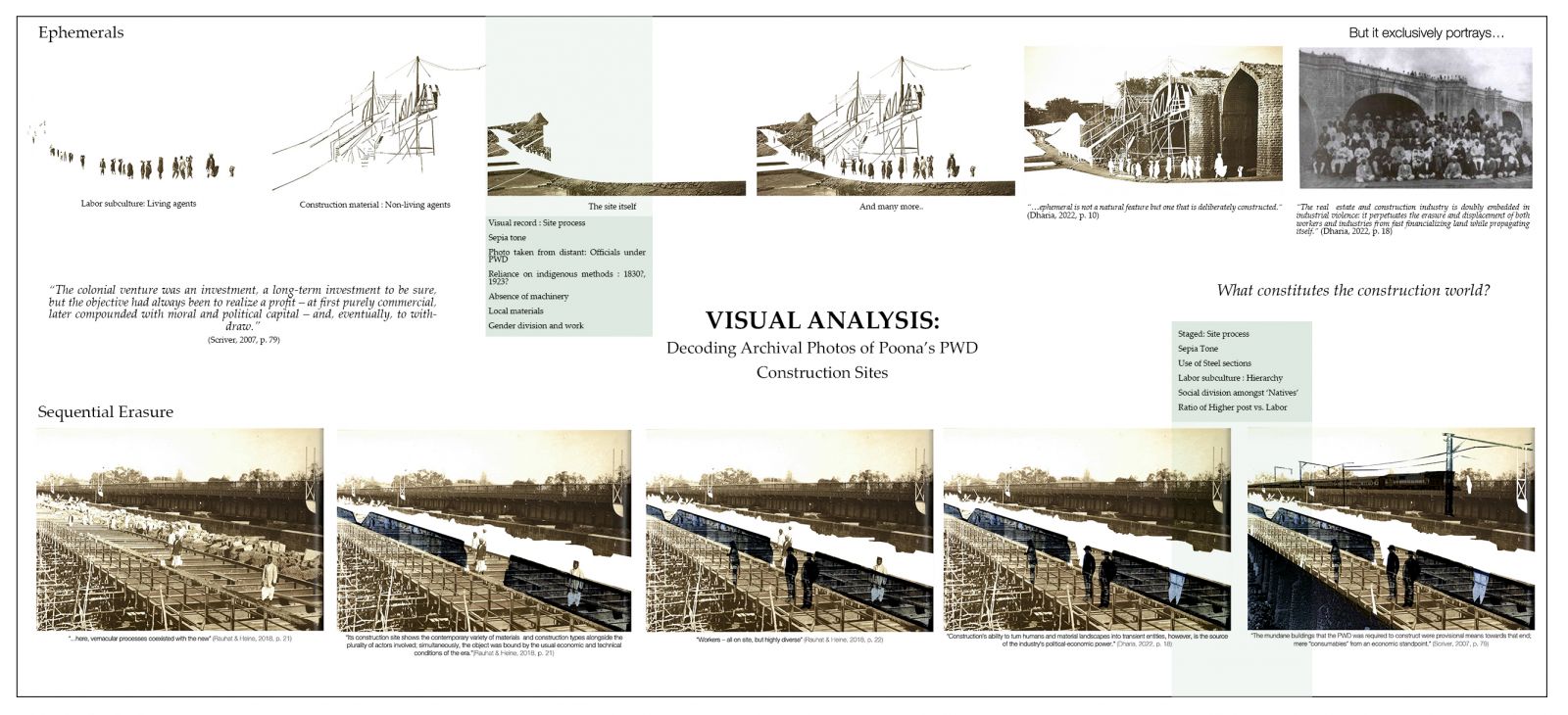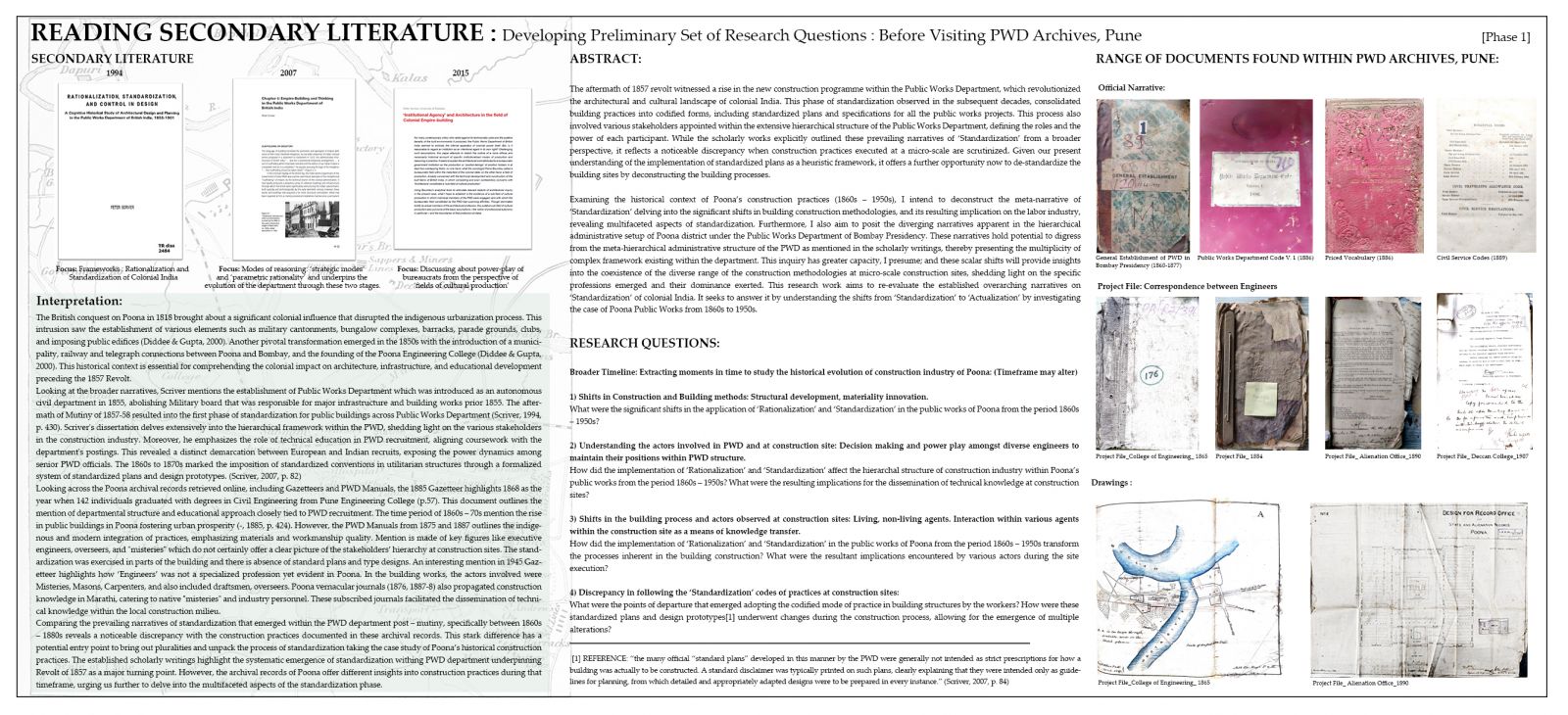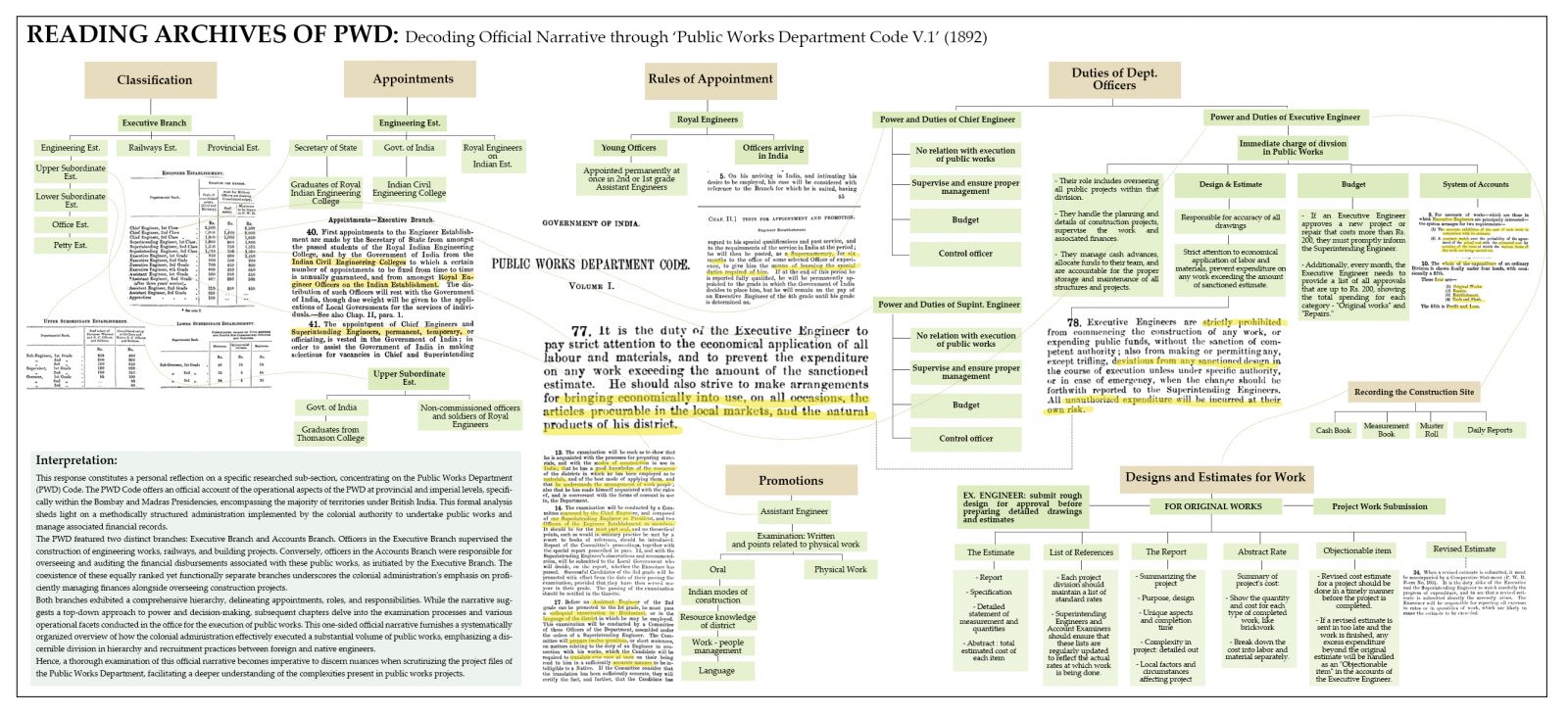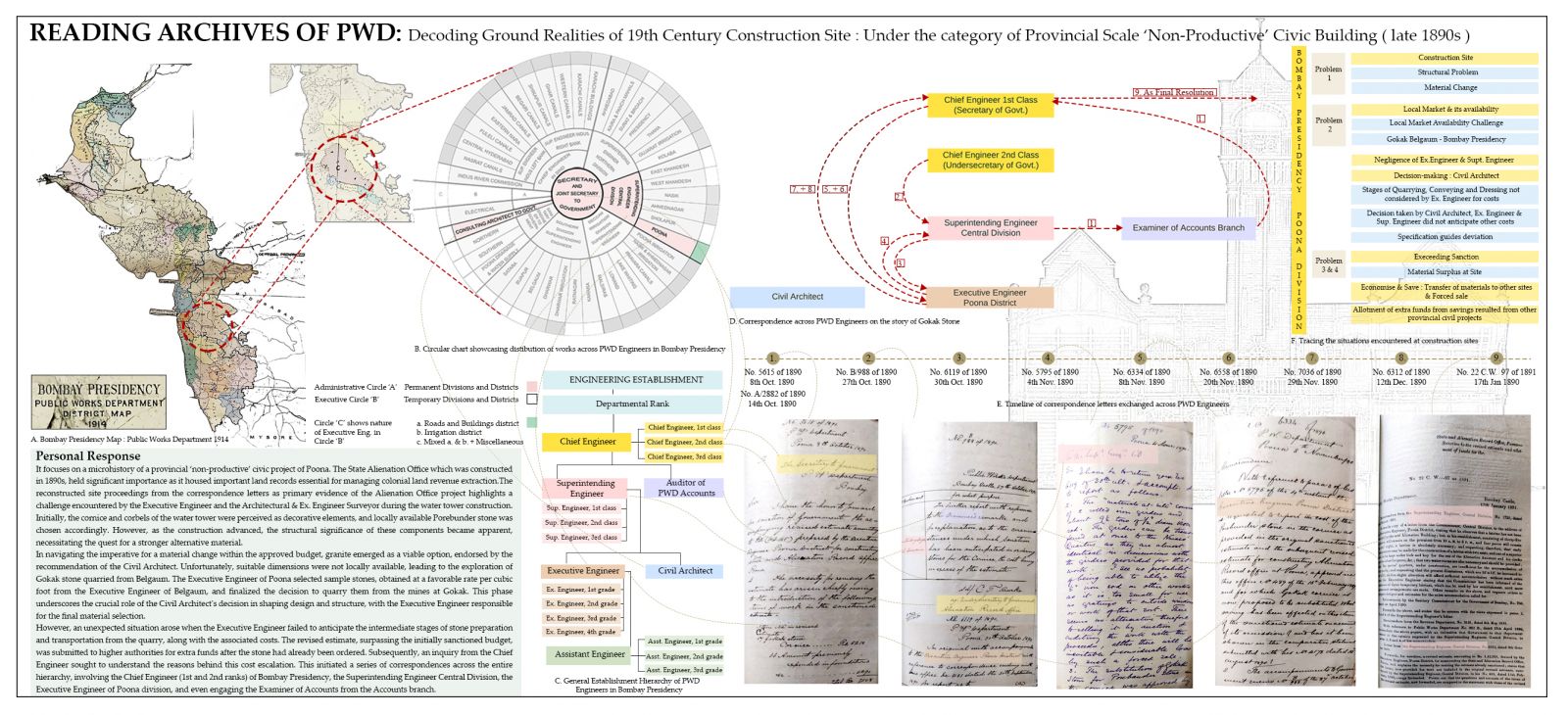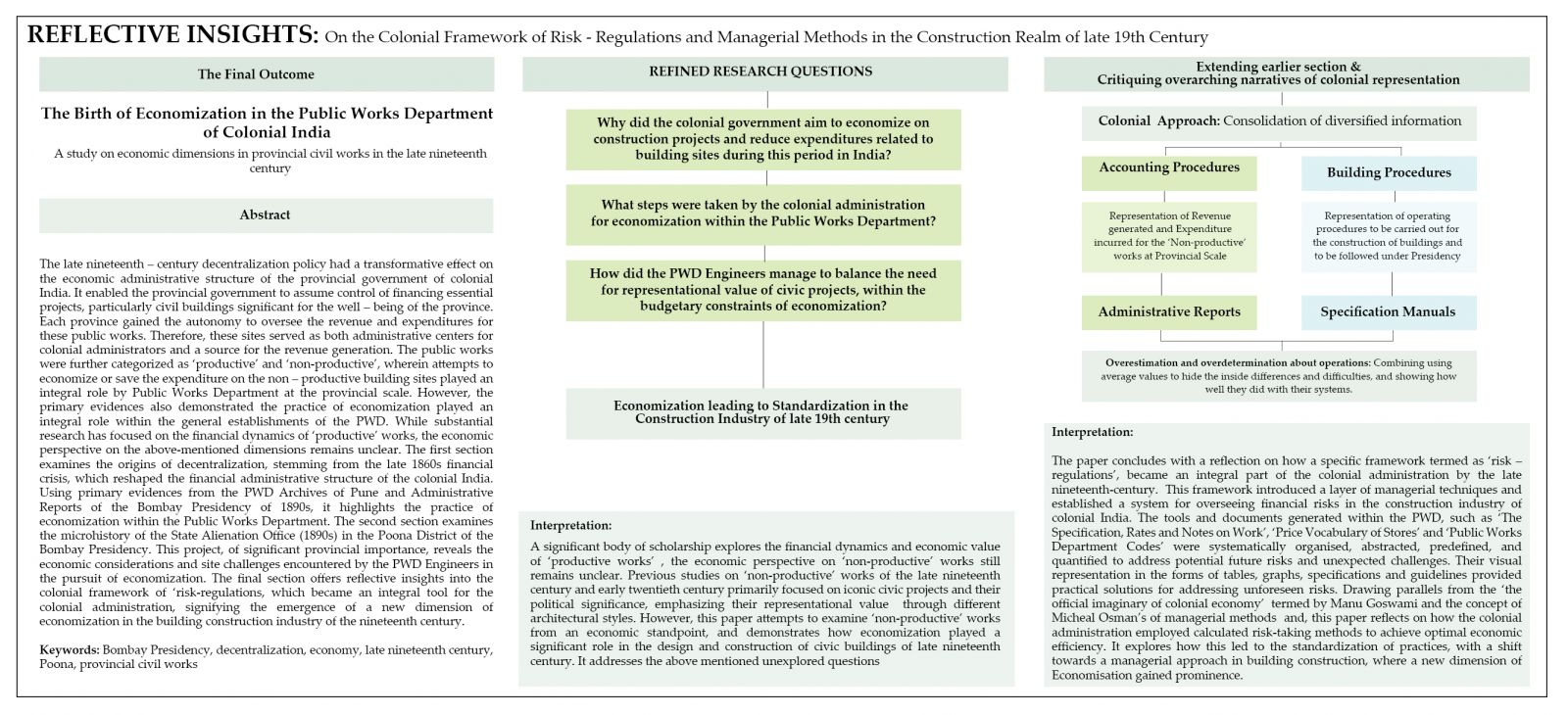Your browser is out-of-date!
For a richer surfing experience on our website, please update your browser. Update my browser now!
For a richer surfing experience on our website, please update your browser. Update my browser now!
This project rigorously explores the economy as a 'non-human' actant and its pivotal role in the design and construction of late nineteenth-century civic buildings. Focusing on the Public Works Department, it scrutinizes strategic measures taken by the colonial administration to achieve economization. Through an in-depth analysis of primary sources from the Pune PWD Archives and Administrative Reports, the research explores the economic dynamics shaping 'productive' and 'non-productive' public works. The studio's outcomes encompass a comprehensive traditional research paper and an illustrative visual board, presenting a multifaceted understanding of the economic dimensions influencing the construction industry during this period.

